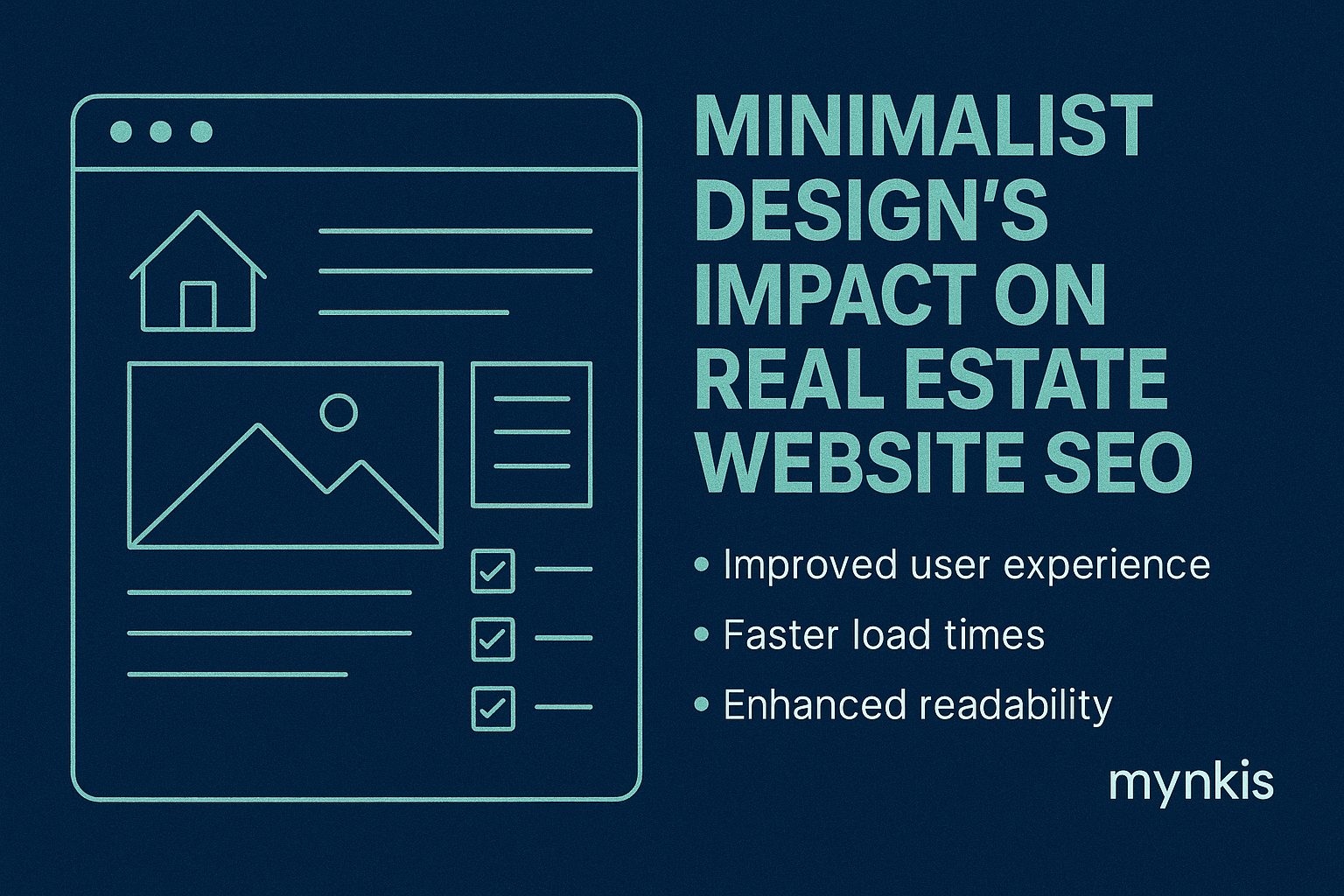Schedule a Demo
Simplicity reigns supreme in our fast-paced digital world. For brokers, a well-designed property listing website isn’t just about showcasing properties; it’s about capturing leads and boosting local SEO rankings. Let's dive into the transformative power of minimalist web design and explore why less is often more when it comes to creating an effective online presence.
Minimalism in web design focuses on achieving more with less. This approach not only looks clean and modern but serves a crucial function: to streamline user experience. By cutting out extraneous features and keeping only what's necessary, visitors can more easily navigate your site and find what they're looking for—whether it's listings, contact information, or property details.
This isn't just about aesthetics; there's a tangible benefit to SEO as well. Google rewards fast-loading, mobile-friendly sites with higher rankings. That's why a minimalist design can boost your property listings on local search queries, ensuring your real estate business stays ahead of the competition.
Have you ever landed on a website and felt overwhelmed by the clutter? In my experience working with real estate professionals, I’ve seen firsthand how a cluttered site can deter potential clients. A streamlined user experience, by contrast, facilitates smoother interactions, encouraging visitors to stay longer and engage more deeply with your content.
By adopting a minimalist layout, you enable users to quickly understand your value proposition. They can easily find contact details, learn about your services, and browse listings without the distraction of excessive visuals or irrelevant content. This not only increases user satisfaction but also improves the likelihood that visitors will take actionable steps like making inquiries or scheduling viewings.
A minimalist design doesn't just please users; it's a SEO powerhouse. Google's algorithms favor websites that load quickly and are easy to navigate. A minimalist site typically loads faster, which is essential for improving your search engine rankings.
Furthermore, a clean design makes it easier for search engine crawlers to index your site, ensuring your property listings are properly recognized and ranked in local searches. When users search for "real estate near me," a minimalist site can make all the difference in capturing those all-important local queries.
Creating a minimalist website involves more than just reducing clutter; it's about strategic placement and effective use of elements. Consider your site's navigation: it should be intuitive, with clear labels and an uncluttered menu that directs users effortlessly to where they want to go.
Choose a color scheme that embodies professionalism and elegance. A neutral palette with subtle accent colors not only looks sophisticated but also directs the user’s focus where you want it. Think about how real estate titan Zillow uses a minimalist approach to focus on property images and details without distracting users with unnecessary visuals.
Typography is another strategic aspect. Opt for clean, easy-to-read fonts that enhance readability. The less mental effort required to digest information, the better the user experience and the higher the engagement. That, in turn, can lead to more shares and backlinks, boosting your site's authority in search engine eyes.
Let's consider a real-life example. A boutique real estate firm I've worked with recently transformed their cluttered, outdated website into a sleek, minimalist powerhouse. Their new site featured larger images of properties, a clearer menu, and a focus on client testimonials—resulting in a 30% increase in leads within the first three months.
Similarly, a national real estate agency revamped its local pages to reflect minimalist principles, witnessing a noticeable improvement in their local SEO rankings. These changes not only made their listings more visible to users but also dramatically improved their search engine performance, reinforcing the effectiveness of this design strategy.
Ready to embrace minimalism? Start by auditing your current site. Identify elements that do not serve a clear purpose—excessive animations, too many call-to-action buttons, or extraneous text—and pare them down. Focus on high-quality images of your listings, as visuals carry much of the narrative in real estate.
Next, consider the power of whitespace. Leaving ample space between elements makes your site more readable and visually pleasing. This approach also directs attention more effectively to your listings and call-to-action buttons, increasing their impact.
In terms of technology, utilizing a robust platform capable of supporting a minimalist design can be helpful. Platforms like WordPress with specific minimalist themes or custom solutions can ensure that your site remains both visually appealing and SEO-friendly.
Lastly, user feedback is crucial. Gather insights from potential clients about what they find engaging and what could be improved. Incorporate these into your design to create a site that truly resonates with your target audience.
A common concern for brokers transitioning to minimalist design is losing the ability to convey comprehensive property information. The key is to balance minimalism with richness—not through overcrowded pages, but by using interactive elements like tabs and accordions.
These can help to house detailed information about a property while keeping the initial view clean and focused on the visuals. On each listing, for example, offer a simple photo gallery and a brief description at the forefront. Additional details, floor plans, and other information can be accessed through simple clicks, keeping the user experience both efficient and engaging.
